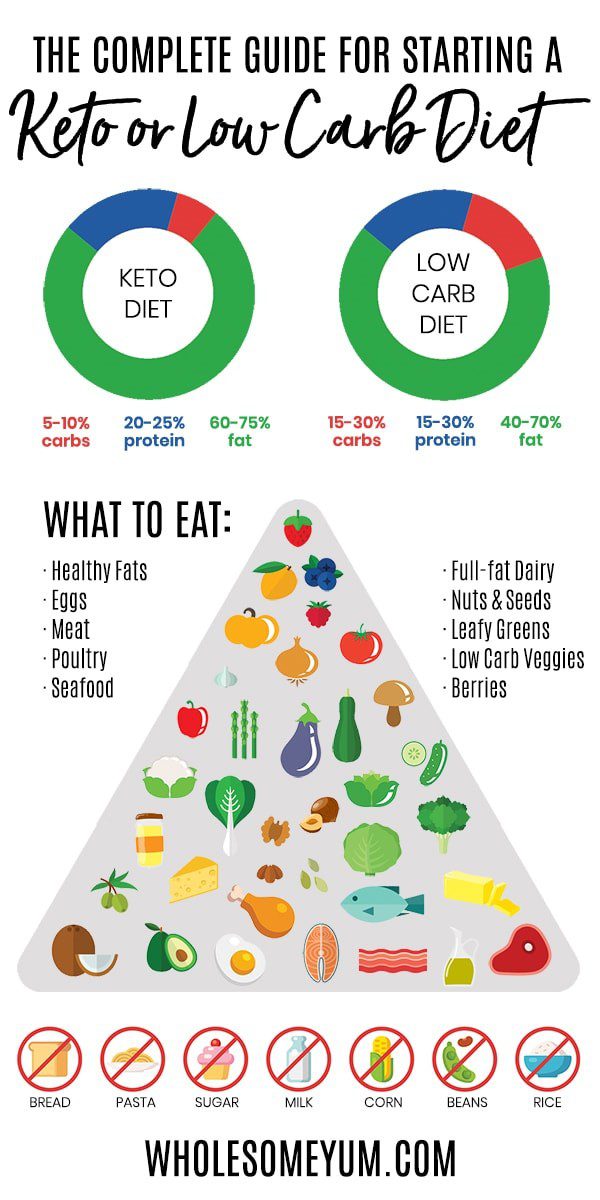The basis for the ketogenic diet is to limit carbohydrate foods and increase fats in the diet to push the body into ketosis- or using fat for fuel rather than glucose. Medically supervised ketogenic diets restrict carbohydrates to 20-50 grams per day. Most carbohydrates come from non-starchy vegetables, such as greens, broccoli, carrots, cabbage, and bell peppers.
The diet includes enough protein to preserve lean muscle mass without shifting the body out of ketosis. Limiting protein is important because the body can make glucose form amino acids found in protein. When the body is in ketosis, it uses fat to produce energy in the form of ketones, which can cross the blood-brain barrier and provide fuel for the brain. The level of ketones remains lower than what is found in diabetic ketoacidosis (DKA).
A true keto diet consists mostly of fats (~85%), little protein (10%) and limited carbohydrates (5%). As you can imagine, this diet is difficult to follow long-term. Most people who are “on a keto diet” are actually following a modified version with less fat and more protein (and likely more carbohydrates).
Potential Short-Term Benefits
Small studies do report enhanced weight loss, as well as improved insulin sensitivity and glycemic control. Participants report decreased hunger, which may be the result of the diet’s influence on key appetite hormones, such as ghrelin. Restricting certain food groups may at least initially help a participant cut back on calories.
If you are interested in the ketogenic diet, talk with your healthcare provider or a registered dietitian nutritionist (RDN) to learn more.


